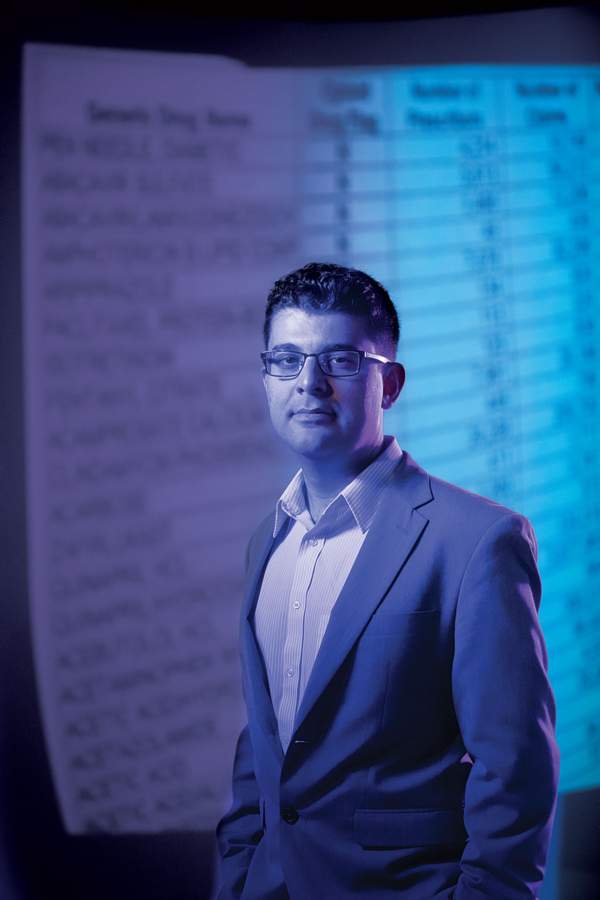Data mining tools developed at Texas State University can help auditors stop fraud and wasteful spending to save taxpayers billions annually.
Even if you haven’t been to a doctor this year, medical insurance fraud has taken money from your pocket, along with every American taxpayer’s, says Tahir Ekin, associate professor in the Department of Computer Information Systems and Quantitative Methods in the McCoy College of Business.
U.S. healthcare spending topped $3.2 trillion in 2015. Of that, 3 to 10 percent is lost to fraud and waste every year. “We are talking about $100 to $300 billion, lost to overpayment,” Ekin says. “This is money that could be spent elsewhere, for deserving patients.” In his research, Ekin focuses primarily on Medicare and Medicaid claims, our nation’s largest public health insurance providers. Waste and fraud not only costs taxpayers money, he says, it erodes public confidence in the system and diverts resources from people who need care.
“We have limited auditors, who have limited time,” he says. “If you have 10,000 providers to investigate, but you have the resources to investigate just 10, how do you select those 10?” In his recently published book, Statistics and Health Care Fraud: How to Save Billions, Ekin shows how we can use data mining like a magnet to find the needles in the haystack. “We can flag specific transactions or provider networks for auditors or law enforcement to take the next step and investigate,” he says.
Americans spend more than
$3.2 trillion
on healthcare each year, losing as much as 10% to waste and fraud.
Source: Centers for Medicare & Medicaid Services
Globally, more than
$455 billion
is lost to medical fraud and over-billing.
Source: European Healthcare Fraud & Corruption Network
Original post https://alertarticles.info
